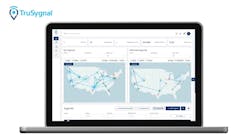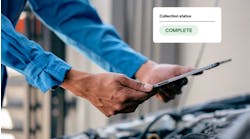MONTREAL, QUE. Is the heavy trucking industry the poster child for automation or the problem child? It’s a question that moderator Peter Sweatman, a co-founding principal at CAVita, posed to a panel of transportation experts discussing platooning and autonomous trucking here at Michelin’s Movin’On Conference on sustainable mobility.
Panelist John Woodroffe, head of transportation safety analysis at University of Michigan, explained that it is important for truck manufacturers and tech developers to make autonomous trucks even more reliable and safer than the trucks already on the road.
“We should be designing trucks that refuse to crash,” he noted. “If the truck refuses to crash, then society’s perception will improve, and it will reflect the industry well.”
Fellow panelist Steven Shladover, a professor and program manager of the PATH Program at University of California at Berkeley, agreed.
“I think the trucking industry should be the poster child for automation, not the problem child,” he stressed. “I think a lot depends on whether it will be possible to get some separation between truck traffic and regular traffic.
Shladover added that we’ve all experienced Level 4 automation and driverless vehicles at some point – when we take shuttles at airports between terminals, for instance. However, he noted, that level of automation is in a very restricted environment.
“How do we get to a point where we have restricted truck lanes so the trucks are segregated from the unsafe drivers of other vehicles,” he asked.
Jose Viegas, secretary-general of the International Transport Forum, highlighted some of the major challenges that have to be addressed before fully autonomous trucks become the norm. Though the current truck driver hours of service regulations could end up being lifted with autonomous trucks, Viegas explained that there has to be a harmonization of regulatory frameworks.
“We may be entering a nightmare of regulatory harmonization,” he emphasized. “Do we draft totally new regulations or do we extend current regulations? After a certain point, extending a regulation that was made for human drivers may have a blockage effect that we did not anticipate.”
Viegas also noted that in addition to addressing the general public’s fears of passing a truck on the road with no driver behind the wheel, the industry as a whole must consider new mistakes humans can make with the new equipment. For instance, he said, there could be fuzzy communication between drivers and the movement of vehicles and a driver could end up misinterpreting computer problems.
“With automation, a lot of problems may be solved, but we could be creating a totally new range of problems that we don’t know about yet,” he explained. “And we have to be prepared for that. This is a process that should be socially managed and harmonious, and we believe it could be done.”
Truck platooning
Throughout the industry various transportation experts and analysts have projected that platooning can lead to significant fuel savings for truck fleets. A leading truck in a platoon could save around 5% of fuel consumption, while the savings for the second, third, or fourth trucks in a platoon could generate fuel savings of around 10% to 15%.
Regardless of the fuel savings benefits, there are still many challenges and kinks the industry still has to work out. According to Shladover, some of those challenges include protecting the spectrum for vehicle-to-vehicle communications, software safety assurance for higher automation, and the harmonization of following-distance regulations. Another big problem, he said, is addressing unrealistic expectations for platooning and higher automation.
“Public and political leaders have been led to believe that all truck driver jobs will go away,” he said. “This has to be evolved on a gradual time scale and if people are misled, we’re going to have very serious problems. For a number of years the system will require driver engagement. The driver is not going to go away.”
Bernard Jacob, the deputy scientific director for transport, infrastructures and safety at IFSTTAR, noted some additional opportunities and challenges regarding platooning.
Opportunities:
- Driver/truck productivity and range extension
- Lane capacity increase
- Eco-driving and speed harmonization, aerodynamic gain
- Logistics organization
Challenges:
- Impact on infrastructure migration (i.e., long span bridges)
- Road safety and other users’ perception
- Driving time regulation and social issues
- Business model, platoons “on the fly,” multi-brand platoons
And because of the unequal range of savings for the vehicles in a platoon, Woodroffe explained there needs to be some sort of mechanism to reward the first truck in a platoon. Another big question broached was insurance liability and who would be liable if first truck in a platoon gets in an accident.
Panelists agreed this would be something the manufacturers and industry as a whole would have to address with insurance companies and the courts going forward.






